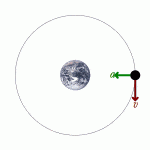Types Of Rocks Found In The Grand Canyon
Everybody knows the Grand Canyon and what sight for sore eyes its rocky appearance is; but most people do not really know exactly the types of rocks found in the Grand Canyon. Thankfully for you, the aim of this article is precisely this: to introduce you to its geology and help you understand its make-up.
Before we get into specifics and start analyzing the rocks found in the Grand Canyon, here are some basic information. The Grand Canyon is in the US, specifically, the Colorado River of Arizona in Texas, and it is classified among the Seven Natural Wonders of the World. Its unique rocky landscape is the result of constant erosion by water and wind, that started taking place no less than 17 million years ago, at least that is the number scientists came up with in 2008 after conducting an analysis based on uranium-lead dating, although some scientists believe that it could be even older. Admittedly, it must seem very unusual that the primary cause of erosion in the Grand Canyon is water, since it is located in the desert. Surprisingly, though, this is exactly the issue. The Grand canyon’s soil is very stiff and hard because it is constantly baked by the sun; as a result when there is rain in the area, the soil cannot absorb water, thus transforming the water of the rain into heavy torrents, which in turn makes the soil even stiffer and harder, and contributes to its erosion even more. Besides erosion, keep in mind also that the Grand Canyon is located at an area characterized by frequent and intense earthquakes; and it is the conflict of earth’s plates that forces new mountains ranges to formed, and older ones to be re-shaped.
Now, with all these background information, let’s move on to the types rocks found in the Grand Canyon. It doesn’t take a genius to realize that there are several types of rocks found in the Grand Canyon, those that are in greater abundance though are: limestones, cherts, shales, schists, sandstones, and granites. To be more specific, sandy limestone is the most common among all types of rocks found in the Grand Canyon, and to connect this with what was mentioned earlier, sandy limestone is essentially what confirms the theories regarding the formation of the Grand Canyon. Since sandy limestone comprises most the Grand Canyon’s current top, and since sandy limestone can be formed only in a shallow sea (one that is near the coast), this can only be the result of earth’s plates colliding with one another.
All types of rocks found in the Grand Canyon, are fine-grained and hard rocks. Chert is a microfibrous sedimentary rock that owes its reddish appearance to the traces of iron that it contains, which have taken this color due to a process called oxidization. Shale is another sedimentary fine-grained rock composed of a mixture of clay minerals with other minerals. Schist is a metamorphic rock that consists in large mica flakes; while granites are igneous rocks that are granular in texture. And to end this article, here is a fun fact that you should know regarding this wonder of nature: all these types of rocks found in the Grand Canyon are unusually rich in crinoids, brachiopods, and sponges, as well as other marine fossils; they even contain terrestrial fossils like footprints of scorpions, reptiles, and other animals, all of which practically make the Grand Canyon the largest museum of fossils in the world.






